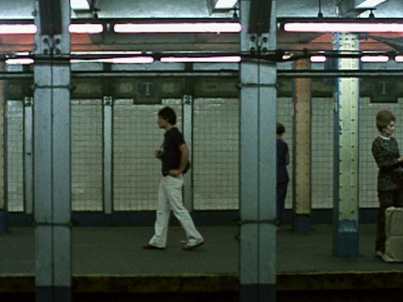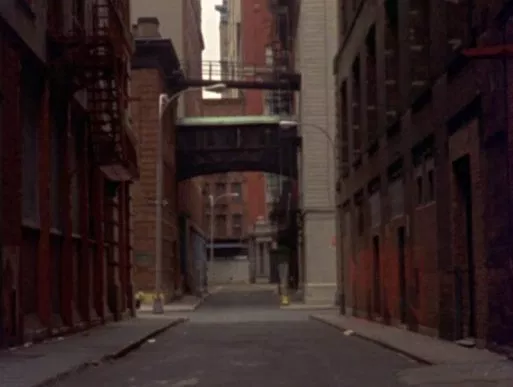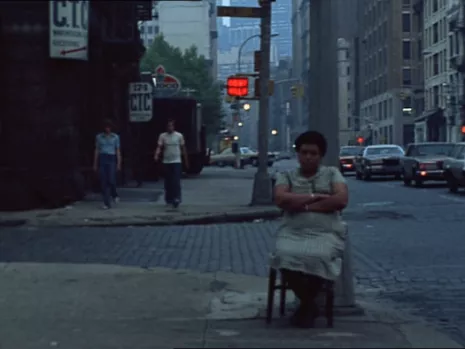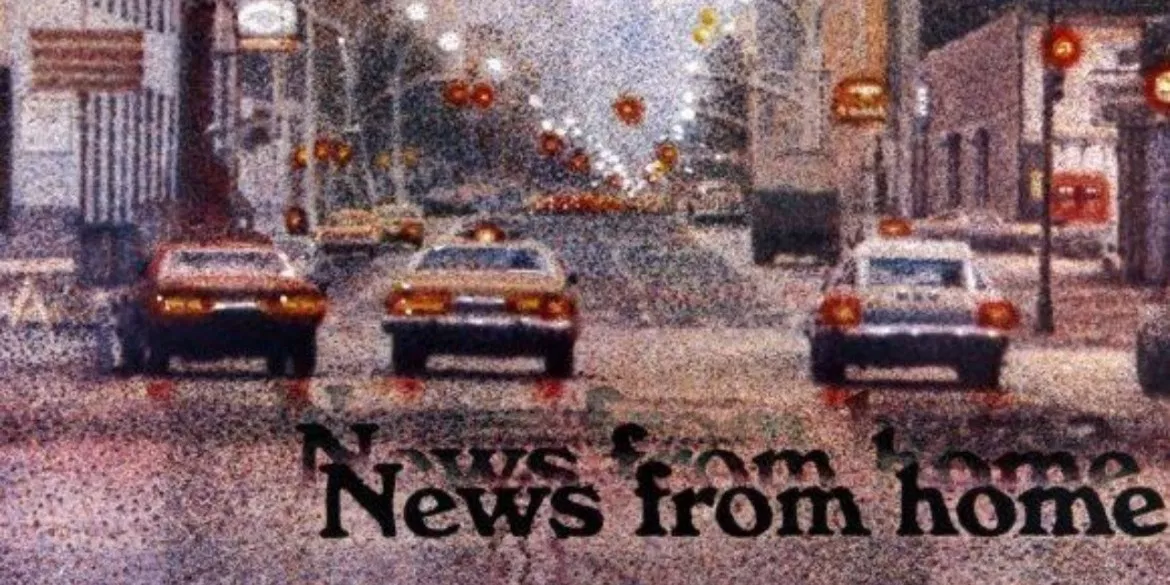Craving Criterion is a new regular series where one of our contributors reviews and discusses the Criterion Channel’s Movie of the Week.
Chantal Akerman’s 1977 avant-garde documentary News from Home is a story of displacement. The film pairs the personal and impersonal, the intimate and the anonymous: over long-take images of New York are companied by Chantal Akerman reading letters her mother sent her while she was living in New York in the early 1970s. Principal photography for News from Home took place in the summer of 1976, three years after the director moved back to Belgium after her period of wandering existence in New York, and create something of a beautiful time capsule of not only a specific moment in Akerman’s life but in the life of the city. Akerman frequently explored the relationship between herself and her mother Natalia (Nelly), a Holocaust survivor, in her work. The experimental documentary probes at the idea of “home,” and lyrically portrays the difficulty of navigating physical and emotional distance from loved ones.
The letters from Akerman’s mother, read in a soft voice by Akerman, often express sentiments of maternal anxiety: she worries whether she has the right address or whether Chantal is actually receiving her letters. She talks about sending summer clothes and money, and about the business or health concerns of her husband (Chantal’s father). She stresses how proud she is of her daughter and how she longs to see her; she repeats time and time again that she just wants her to be happy. “People here are surprised,” she writes when sharing how others react to the news that her daughter is overseas. “They say New York is terrible, inhuman.” New York is at once a city that is cold and unfeeling as it is a vibrant landscape of warmth and excitement. There are shots of busy streets and people swarming out of stores or stations, and the camera also catches unexpected private moments in the faces smoking on corners or in reflections in subway windows. Everyday life in the letters is animated by the everyday life of the city—and though mother and daughter are far apart, they are still concerned with the same mundane routines of going about their days and trying to make a living.

Even though the New York of the film is densely populated, with people everywhere, there are notable absences: there is no physical presence of the filmmaker or her mother onscreen. The voice of Chantal Akerman we hear reading the letters remains disembodied throughout the film—the director is never seen onscreen. There is never any synced, diegetic dialogue, and beyond the voiceover narration, the sonic landscape is largely absent of human voices: instead, we hear dubbed traffic noises and atmospheric sounds of the city streets. Akerman’s ethereal narration of her mother’s words becomes what film theorist Michel Chion calls an acousmetre, a voice whose source has not been visualized. The viewer is denied visual identification with any individual narrator or subject as Akerman’s voice seemingly acquires an autonomy to move between time and space. The camera also does not align itself with any particular subject: it often gives long looks around scenes of New York in extended takes that last multiple minutes, giving us the sensation that we are watching daily life unfold before our eyes. The camera looks with a detached gaze at the busy New York streets as well as at individual people standing on the subway or sitting on their stoop: this is their home, even if it does not always feel like Akerman’s home too.
“You never write about how you’re really doing,” Chantal’s mother writes in one letter, and the viewer also senses that they are never quite sure how the filmmaker really feels about New York and the letters she receives from home. The director’s own interior voice remains unheard: she is always heard through the words of her mother. The film juxtaposes serene, blurry images of rainy sidewalks and cars and taxis driving toward the camera with lively scenes of children playing in the water from a fire hydrant or people spilling out of subways. The soundscape of street cacophony—traffic and people and all the other sounds of a busy life—at times threatens to overwhelm the narration, the noise overwhelming Akerman and her mother.

As the visuals become repetitive, so do the letters: the camera and the narration find their own routines or repeated worries. Akerman’s mother frequently begs her daughter to find the energy to write, and we never really know how often Akerman does write, or what she says. We never get to hear any of the letters Chantal writes in response, and the perspective we get is one-sided. But that perspective becomes blurred as the identity of the mother and daughter become collapsed when Akerman reads her mother’s words. “Just don’t forget about us. Write,” says the mother in one of the letters. Perhaps reading the letters, or making this film, is Akerman’s act of remembrance, both losing and finding herself amidst the hectic city and between the lines of the letters. The disembodied acousmetre is, in Chion’s terms, a “voice without a place.” Akerman as the filmmaker, and Akerman as the recipient of her mother’s letters, exists somewhere between the United States and Belgium, between the past and the present.
News from Home beautifully expresses indirect recreations of memory and indirect returns from the past, as the film is multiple levels removed from Chantal’s experience of New York and her mother’s experience of home in the letters. The repeated pleas in the mother’s letter for Chantal to write back are funny yet heartbreaking, as they attempt to pull Chantal close and return her to her “home” that is now far away. Though many of the mother’s letters are filled with mundane accounts of her daily domestic life, the closeness between mother and daughter are palpable in every word. The mother expresses a hope that Chantal might return home soon, though she concedes: “I think you’re happy in New York, so we’re happy too.” That happiness always remains uncertain, as does Akerman’s place in the world—literally and metaphorically. The final long shot of the film is on the Staten Island Ferry, looking at lower Manhattan. The ferry and the camera move further and further away from Manhattan, creating an elegiac image of separation and distance growing greater. The skyline is shrouded in fog, as is Chantal’s interior life; intense emotions of the letters disappear into the wide anonymity of the city. The film of displacement and motion ends with this scene on the river between destinations, pulling away from the bustling city and journeying into the melancholic mist.

News from Home is currently streaming on the Criterion Channel, and is part of a Short + Feature pairing with Hollis Frampton’s Surface Tension on April 30. Our previous Criterion pieces include Stalker, Chungking Express and Mikey and Nicky.
To help us continue to create content, please consider supporting us on Patreon: https://www.patreon.com/filmera


